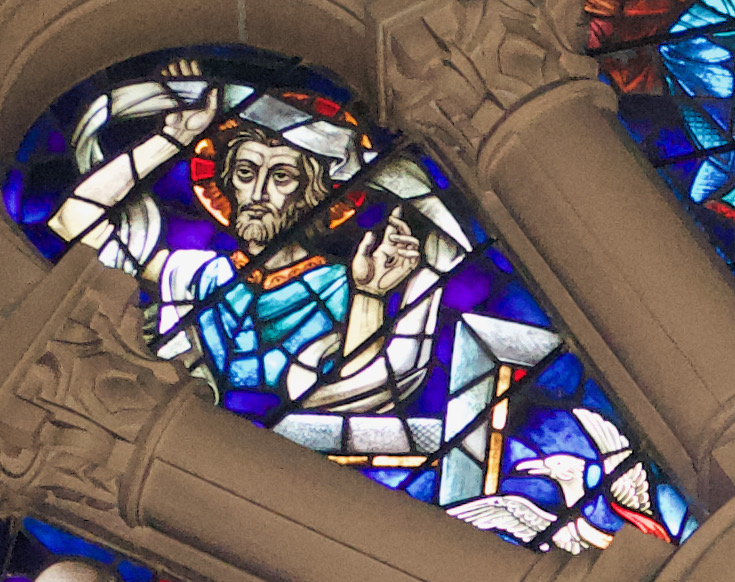
The Resurrection of Jesus is depicted in the God the Son rose window over the choir loft. Jesus is emerging from the angular structure of the tomb while pulling the burial cloth from his head and face. His left hand clearly bears the mark of the nail. His tunic is blue, a color symbolizing divinity and mirroring the color of his garments in other panes in the window. He is truly God and truly human. Jesus has now been raised from the dead in a glorified body, and will ascend to heaven to be with the Father forever. The nail mark in his hand reminds us that we also, are also heirs to the eternal life that He won for us upon the cross.
“I am the resurrection and the life: whoever believes in me, though he should die, will come to life; and whoever is alive and believes in me will never die.” (Jn 11:26)
The phoenix rising out of the flames in the inner corner of this pane is a symbol of the new life that we have in Christ. During this Easter season may we rejoice in the Resurrection of the Lord: Jesus’s triumph over sin and death.